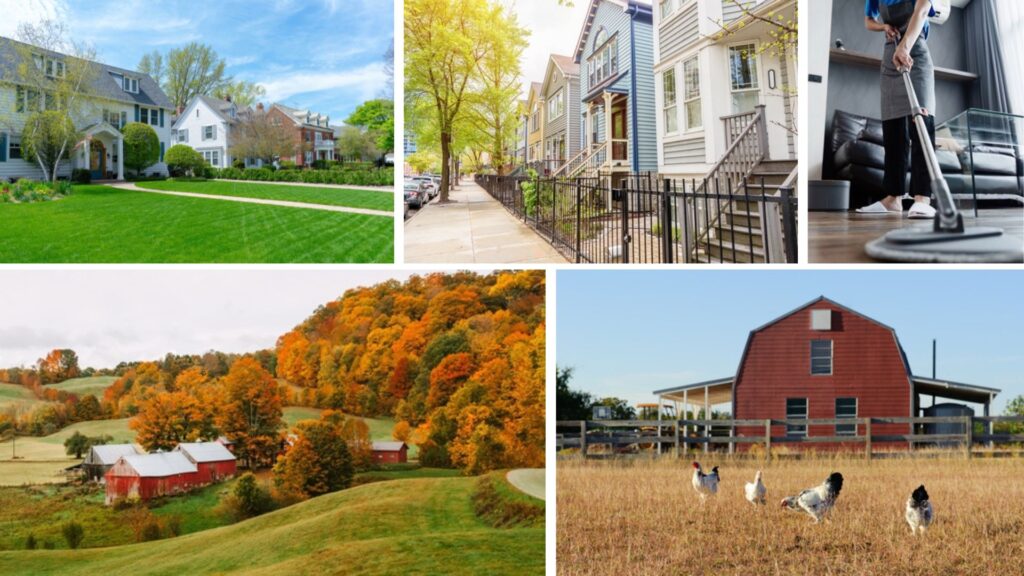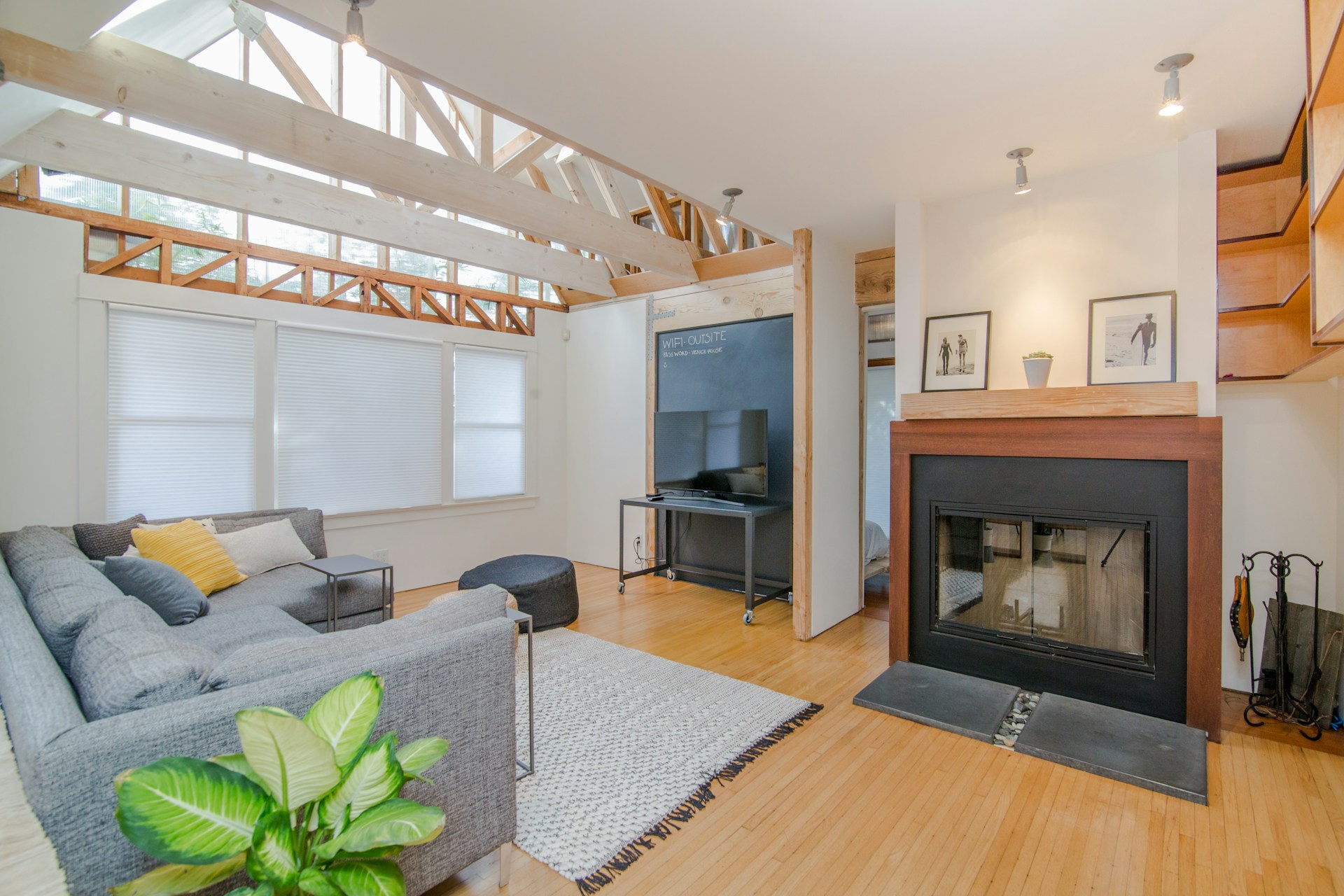House sitting in USA: Your guide to traveling rent-free
House sitting in USA is an excellent way to save money while enjoying a unique experience. Find out all the details!
Ever thought about traveling to the United States and staying for free? It might sound too good to be true, but there’s actually a legal, safe, and increasingly popular option: house sitting in USA. In a country where monthly rent can easily top $1,500, house sitting is becoming a smart way to save money and enjoy unforgettable experiences.
This guide covers everything you need to jump into house sitting: how it works, the kinds of homes you might look after, what paperwork to have ready, and which websites are worth your trust. You’ll also get insider tips to help you stand out. Plus, we’ll break down the perks and the responsibilities, so you can figure out if this adventure is right for you.
Want to see the United States without draining your savings or live like a local for months without paying sky high rent? House sitting might be your ticket. It offers a slower, more genuine and far more affordable way to travel.
How does house sitting work in the United States, and why should you do it?
Before diving into the details like requirements, trusted platforms, and tips, let’s take a moment to explain what house sitting in the United States actually involves. You might have heard of it since it’s become a popular way to travel, but how much do you really know about how it works? We’ll guide you through each step so you get all the facts and can decide if it fits your next trip.
House sitting is an arrangement where someone looks after another person’s home while they’re away. In return, the sitter stays there for free, taking on simple tasks like watering plants, collecting the mail, keeping the place tidy, and often caring for pets. Instead of payment, it’s a mutually beneficial exchange built on trust.
More and more Americans are choosing this option when they travel for work, go on vacation, or need a temporary place during a move. That creates an opportunity for international travelers to stay in real homes, often fully furnished and located in quiet residential neighborhoods.
Why bother with house sitting? One big reason is the savings. Living in the United States without having to cover rent can free up a huge chunk of your budget. Housing is one of the biggest costs here, so avoiding it altogether is a serious advantage!
Another great reason is the chance to experience the U.S. like a local. House sitting lets you settle into a neighborhood, shop where the locals do, and get a real sense of daily life, even if it’s just for a few weeks. Plus, if you love animals, many homes come with dogs or cats to look after, which can make your stay even more rewarding.
In short, house sitting offers a unique way to travel, combining comfort, savings, and a genuine cultural experience in a package that’s hard to beat.
What types of houses can be cared for in the United States?
If house sitting in the U.S. sounds tempting, you’ll love this: there’s a huge variety of homes up for grabs. From small suburban houses to luxury estates, city apartments, RVs, and even rural farms. Some opportunities even let you care for ranches with animals and wide open spaces.
House sitting in the United States: Urban or residential areas
If you want to spend some time in the U.S. without leaving the city behind, choose urban or residential areas. Many house sitting opportunities are in quiet neighborhoods within major cities like Los Angeles, Seattle, Miami, Austin, or Denver, where families are away on vacation, work trips, or weekend getaways.
Choosing urban or suburban neighborhoods usually means looking after typical family homes—think backyards, gardens, and often pets, the kind you see in American shows and movies. Many of these homes have everything you need for a comfortable stay, like a home office, a fully equipped kitchen, laundry, and even a room just for you, which is ideal if you work remotely or just want a relaxing space.
Your tasks will include keeping the house tidy, taking out the trash on schedule, and making sure everything runs smoothly until the owners return. You’ll probably be caring for one or two pets as well. In warmer areas like California, Florida, or Texas, many homes have pools, so maintaining the pool could also be part of your responsibilities.
Basically, it’s nothing you wouldn’t do in your own home, but with the added bonus of enjoying a unique experience without paying a penny in rent.
House sitting in the United States: Farms in rural areas
If you want an even more authentic experience, try traveling to rural areas in states like Colorado, Vermont, Montana, or Tennessee. There you can do house sitting on farms, taking care of chickens, donkeys, horses, or even alpacas.
In these cases, you’ll be responsible for an entire property. This could be a family farm, a ranch with animals, or even a vineyard. Along with caring for the main house, you might have extra tasks like feeding chickens, horses, donkeys, or goats, checking that the barns are in order, and keeping the grounds clean and safe. Some properties have gardens or greenhouses, so you could also be watering plants, harvesting fruits and vegetables, and making sure the irrigation systems are working properly.
While this is a bigger commitment than looking after a city home, it offers a unique connection with nature and a slower, simpler way of life. It’s not for everyone, but it’s perfect for animal lovers and those who enjoy life in the countryside. The rewards are huge: waking up to birdsong, breathing fresh air, gazing at starry skies, and often staying in spacious, comfortable homes that are fully equipped.
Not sure whether to choose a home in a residential neighborhood or on a farm? Don’t worry. Each listing clearly explains what owners expect, so take your time to review it carefully and focus on the opportunity that best fits your lifestyle, interests, and experience.

What requirements must be met to house sit in the United States?
As you can probably imagine, you can’t just move into someone’s home, take care of it, and live there without meeting certain requirements and providing some necessary documents. After all, you wouldn’t leave a complete stranger in charge of your own home. Let’s take a look at the general and specific requirements for house sitting in the United States.
General requirements for entering the United States as a house sitter
Even though house sitting isn’t a formal job, you’ll need a visa that lets you stay legally for the duration of your stay. If you’re from a country in the Visa Waiver Program, like Spain, Chile, or Portugal, you’ll need an ESTA, which allows you to stay up to 90 days as a tourist. If you’re from Argentina, Mexico, Colombia, or any other country that requires a visa, you’ll need to apply for a B2 tourist visa.
In addition to the visa, there are other basic documents that may be requested:
- Valid passport: Valid for at least six months from the date of entry.
- Medical or travel insurance: Highly recommended, as healthcare in the United States is expensive.
- Vaccination certificates: Although tourists usually don’t need them, some homes with pets or farms may ask you to keep your vaccinations up to date, especially if you’ll be handling animals.
- Departure ticket: You will be asked to show proof of a return or onward flight in many cases.
Specific requirements for house sitting in the United States
Beyond immigration requirements, there are certain conditions you must meet to be accepted as a house sitter on house sitting platforms:
- Register with a reliable platform: Most house sitting opportunities are arranged through specialized websites like TrustedHousesitters, MindMyHouse, or House Sitters America. These platforms usually charge an annual membership fee and require you to create a detailed profile, upload photos, and answer personal questions.
- Have references and previous evaluations: If you’ve done house sitting before, ask previous homeowners to leave you a review. If it’s your first time, you can include recommendation letters from employers or acquaintances that highlight your responsibility and trustworthiness.
- No criminal record: Some platforms or homeowners may ask for a clean background check, especially if you’ll be caring for pets or high-value properties.
- Valid driver’s license: It’s not always required, but many suburban or rural areas don’t have public transportation. If you’re house sitting in the countryside, you’ll need a valid driver’s license, and in some cases, you may even use the homeowner’s vehicle during your stay. By the way, reading this guide on driving in the United States can help clear up a lot of questions.
- Minimum age of 18: Most platforms set a minimum age of 18, and some require you to be at least 21, especially when you will handle pets or vehicles.
- Availability and clear communication: Homeowners usually prefer sitters who are flexible, respond promptly, and show genuine interest in taking care of the house and animals.
Make sure you meet these requirements, as doing so gives you access to more opportunities and increases your chances of being chosen over other applicants. Another key point is that the more complete and transparent your profile is, the more trust you’ll build. Keep reading for some very useful tips on house sitting in the United States.
What do I need to do to be accepted as a house sitter in the United States?

Getting selected as a house sitter isn’t just a matter of luck. Even though there are plenty of opportunities, competition is tough, and standing out from other applicants can make all the difference. These tips will help boost your chances of being chosen for house sitting in the United States and avoid potential pitfalls along the way.
1. Treat your profile as if it were a job application
Your profile is the first thing the landlord will see, so pay attention to every detail:
- Use a clear, friendly, and professional photo: It’s best to be alone, wearing neutral clothing, smiling, and in a calm setting like a home, park, or at a desk. Avoid group photos, sunglasses, party shots, or exaggerated poses.
- Highlight your experience with pets, your responsibility, and your domestic skills: If you know how to care for plants, keep a home tidy, or manage a schedule of tasks, make sure to mention it! Highlight anything where you feel you can really make a difference.
- Add verifiable references and real contact details: This helps build trust.
2. Adapt your message to American culture
People in the United States highly value punctuality, clear communication, and respect for privacy. So when reaching out to a homeowner:
- Be direct but cordial. Avoid exaggerations or overly informal messages.
- Mention why you want to take care of that particular house (for example, if you love dogs and there are two golden retrievers).
- If you have previous experience, even if it was informal (such as taking care of a relative’s house), be sure to mention it.
3. How to stand out in an interview
If the owner wants to meet you via video call, prepare as if it were a job interview:
- Choose a quiet place with good lighting and a tidy background.
- Be punctual. Punctuality in the United States is a sign of respect.
- Be proactive: Ask if there are manuals, security cameras, specific tasks, or emergency contacts.
- Project confidence. If you’re nervous before the interview, try some relaxation or breathing techniques to calm your anxiety. They really help!
4. Avoid fraud and scams
Unfortunately, you can’t judge a book by its cover. To stay safe:
- Use reputable, established platforms (we’ll highlight the safest options soon). Be wary of offers that come through social media or other unofficial channels, especially if there’s no verification involved.
- Never send money upfront. House sitting is an exchange, not a paid service. If someone asks for money for “administrative fees” or “guarantees,” that’s a red flag.
- Check out the comments and ratings for each host if you’re on a platform.
5. Other useful permissions
Having an international driver’s permit or a valid US license can be a big advantage, especially if the home is far from a city. It’s also helpful to have liability insurance, as some platforms see it as a plus when selecting sitters.
The bottom line is that showing you’re trustworthy, authentic, and ready goes a long way. A well-prepared profile makes it much easier for homeowners to feel confident leaving you in charge of their house and pets.

What are the best platforms for house sitting in the United States?
When you are ready to start house sitting in the USA, the first step is to join a trusted platform. These sites connect homeowners with sitters in a secure way and let you filter opportunities by location, dates, and responsibilities. Everything from profiles to interviews, agreements, and reviews is managed through the platform, making it the safest way to get started with house sitting in the USA.
Below, we provide detailed information on the three best house sitting websites in the USA:
1. TrustedHousesitters
TrustedHousesitters is a widely regarded platform, with thousands of active listings and a strong presence across the United States. It’s perfect if you want to look after homes in cities like New York, San Francisco, Seattle, or Austin, as well as in rural areas with stunning views.
Here are some details about how it works:
- Registration fee: Starting at $129 a year for the basic sitter plan. There are also Premium plans that offer extra perks, such as coverage for last-minute cancellations.
- Benefits:
- Unlimited posts throughout the year.
- Mobile app for easy application and communication.
- Review system, ID verification, and filters by type of pet, plus 24/7 access to free veterinary support during stays if you plan to do pet sitting.
- Technical support should you encounter any issues.
TrustedHousesitters stands out for its professionalism and high-quality profiles. It may cost more than other platforms, but it offers the most complete experience and has a very active community.
2. House Sitters America
This is a more affordable option that focuses entirely on the US market. It’s a great choice if you only want to housesit within the country and prefer a straightforward platform with minimal experience requirements.
- Registration fee: $49 per year.
- Benefits:
- Unlimited access to all listings from owners in the US.
- Customizable profile with descriptions, photos, and reviews.
- Direct contact with owners through the private messaging system.
- Email alerts when an offer that matches your preferences appears.
- No commissions or hidden costs.
What makes House Sitters America interesting is that it offers many opportunities in areas other platforms often overlook, like small towns, rural regions, and suburban homes. There also tends to be less competition for these positions.
3. MindMyHouse
MindMyHouse is a well-established platform with a global reach and an active community, especially among beginners. Although it lists fewer opportunities than some of the others, its low cost and friendly approach make starting in house sitting easy.
- Registration fee: $29 per year.
- Benefits:
- Globally visible profile, with photos, references, and availability.
- Search system filtered by country, type of home, and duration.
- Email notifications based on your criteria.
- Access to advice, resources for new caregivers, and a community with forums and support.
Choose MindMyHouse if you want to start with a low investment and explore opportunities in the United States, while keeping the option to housesit in other countries later, such as Canada, Europe, Australia, or New Zealand.
How can you house sit in the United States and stay connected?
If you’re going to house sit in the United States, staying connected is something you need to plan ahead. You’ll rely on internet for everything from communicating with homeowners and following instructions to dealing with emergencies and keeping in touch with family and friends. Most homes have WiFi, but you won’t always be inside. Having your own mobile data makes getting around the city, running errands, or going out much more convenient.
The easiest and most hassle-free way to stay online while house sitting in the United States is with a monthly plan from Holafly. You’ll get connected as soon as you land, without having to hunt for public WiFi or buy a physical SIM card. The best part is you can use Google Maps, make video calls, use WhatsApp, watch Netflix, or run any app without worrying about running out of data, thanks to their unlimited data plans. Plus, it’s competitively priced and works globally, since their eSIM covers over 170 countries.
Important: If you are a frequent traveler and want to stay connected without worrying about expensive roaming or looking for a new SIM at every destination, Holafly’s subscription plans are for you. With a single eSIM, enjoy internet in more than 170 countries for a fixed price and no surprises on your bill. Travel without limits and connect easily and securely! 🚀🌍

Frequently asked questions about house sitting in the USA
It depends on the arrangement with the homeowner. Some stays last just a few days, while others can go on for weeks or even several months. In rural areas, for example, longer stays are more common. Keep in mind, though, that your visa or permit will also limit how long you can stay.
No, house sitting isn’t about getting paid. It’s more of providing care and handling basic tasks in exchange for a place to stay. You won’t need a work visa, but you also won’t earn a paycheck. It’s a smart way to cut costs while having a one-of-a-kind experience.
You can find house sitting opportunities for free if you know someone personally, but most people go through dedicated platforms since they’re safer and more reliable. For a yearly fee, these sites let you apply to any listing and create a solid profile as a trusted caregiver.
Yes, you can do it as long as you don’t exchange money and you enter the country as a tourist. The law considers house sitting legal because people treat it as a private agreement without any financial exchange. Just make sure you meet all the travel requirements, like a valid passport and the proper visa or ESTA, and don’t overstay your allowed time.
It varies from case to case. Some homeowners accept couples or families, while others prefer just one caretaker. Homeowners generally don’t allow you to bring your own pets, since their animals might not get along with them. If you have any doubts, make sure to review the specific rules before applying.





 Language
Language 


















 No results found
No results found







